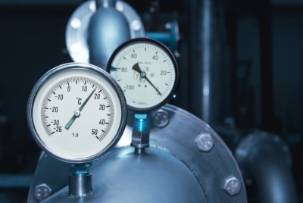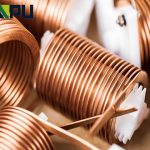High temperature resistant enameled wire is a kind of electromagnetic wire designed for extreme working environment. It is composed of conductive metal core wire and special insulating coating. It can work stably for a long time under high temperature conditions that conventional enameled wire cannot withstand.
High temperature resistant enameled wire lies in its excellent thermal stability and insulation reliability, which makes it an indispensable key material in modern industry. And high temperature resistant enameled wire can withstand high temperature environment of 155℃ to 1000℃ for a long time.
Performance advantages of high temperature resistant enameled wire:
In terms of thermal stability, high-grade polyimide enameled wire can work for a long time at 200℃, and the dielectric loss inflection point temperature is as high as 250℃; polyester imide enameled wire can work for 20,000 hours in 180℃ environment, and can withstand 380℃ high temperature for 2 minutes without being broken down.
In terms of mechanical properties, the elongation of high-quality high temperature resistant enameled wire can reach more than 30%, and it performs well in the quick break test. In terms of electrical performance, its dielectric strength is higher than 120kV/mm, and it can easily pass the 3kV/1min withstand voltage test.
Key performance parameters of high temperature resistant enameled wire
The performance evaluation of high temperature resistant enameled wire is a systematic project, involving multiple indicators such as heat, electricity, and mechanics. These parameters jointly determine the reliability and life of the product in practical applications. The International Electrotechnical Commission (IEC) and the National Electrical Manufacturers Association (NEMA) of the United States and other institutions have formulated global universal standards for the temperature resistance level of enameled wire, and enameled wire is divided into multiple levels according to long-term working temperature, such as Y (90℃), A (105℃), E (120℃), B (130℃), F (155℃), H (180℃), and C (>180℃) [citation:11]. In practical applications, high temperature resistant enameled wire usually refers to products of grade H and above, which can work stably in high temperature environments above 180℃ for a long time.
There are significant differences in material formulation and process of enameled wires of different temperature resistance levels. 180-grade enameled wire mainly uses polyesterimide or polyamideimide materials. The paint film does not crack after 30 minutes of thermal shock at 220°C. It is widely used in high-temperature environments such as air-conditioning compressor motors [citation:9]. 200-grade enameled wire uses more advanced polyimide materials, with a long-term working temperature of 200°C and thermal shock test conditions increased to 250°C/30 minutes. It is commonly used in the aerospace and military fields.
With its excellent heat resistance and reliable insulation properties, high-temperature enameled wire has penetrated into various fields of modern industry, from daily household appliances to high-precision aerospace technology. Different application scenarios have different performance requirements for enameled wire, which has also prompted high-temperature enameled wire to develop a variety of specifications and varieties, forming a complete application spectrum. Understanding these application scenarios not only helps to understand the actual value of high-temperature enameled wire, but also provides insights into the trend of future technological development.





